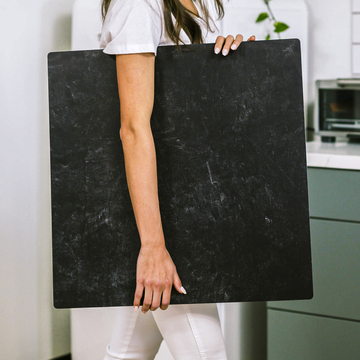Have you ever stared at a glistening burger in an advertisement, wondering how it maintains that impossibly perfect appearance? Or questioned how ice cream keeps its voluptuous swirls under scorching studio lights without collapsing into a puddle? Welcome to my world-the fascinating realm of fake food photography, where I've spent the last decade mastering techniques that blend art, science, and a touch of culinary deception.
As a professional product photographer specializing in food imagery, I've watched clients' jaws drop when I reveal what's actually in front of my lens. It's not just photography-it's material science in disguise.
Beyond Basic Food Styling: The Technical Mastery You Never See
Forget everything you've heard about simple swaps like motor oil for syrup or shaving cream for whipped cream. Those are amateur tricks from a bygone era. Today's commercial food photography employs techniques that would impress engineers and materials scientists alike.
During a recent shoot for a national ice cream brand, my client watched in amazement as I positioned our "hero scoop" directly under lights that would have melted real ice cream in seconds. "How long will it hold?" she asked. "Indefinitely," I replied, "we made this one three years ago."
The Material Science of Delicious Deception
Engineering the Perfect Fake
Modern fake food starts with silicones precisely formulated with specific hardness ratings-typically between Shore A 10-30 for those technically minded readers. I work with specialized fabricators who understand that creating convincing cheese pulls isn't just about appearance; it's about selecting materials with the correct subsurface scattering properties.
This technical term describes how light penetrates beneath a surface, bounces around inside the material, and emerges again-creating that subtle glow that makes strawberries look juicy or cheese appear creamy. It's the same principle used in 3D animation, except we're creating physical objects that behave optically like their edible counterparts.
The Color Science That Makes or Breaks Realism
During a hamburger shoot last summer, I spent three hours with a specialist adjusting the color of our silicone patty. Excessive? Not when you understand we're matching colors in L*a*b* color space using spectrophotometers-a mathematical approach to color that aligns with human visual perception rather than simple RGB values.
This precision matters because cameras are merciless at revealing even subtle color differences that might pass unnoticed to the casual observer but will immediately register as "something's off" to viewers of the final image.
The Physics That Makes Fake Food Look Delicious
The Fluid Dynamics of the Perfect Drip
That mouthwatering sauce dripping down the side of a dessert? It's likely a carefully formulated mixture of glycerin, methylcellulose, and photographic resins with precisely controlled viscosity. I keep detailed notebooks tracking the exact formulations needed to mimic everything from chocolate ganache to maple syrup.
The technical challenge lies in matching the refractive index-typically between 1.33-1.47-ensuring light bends through our fabricated liquids exactly as it would through the real thing. This is what creates those appetizing highlights and translucent edges that separate professional food imagery from amateur attempts.
Microscopic Attention to Texture
For a recent artisanal bread campaign, I collaborated with a digital artist who used photogrammetry to capture the surface structure of a crusty loaf at the micron level. We then 3D printed molds to recreate these exact textures in our fake bread. Excessive? The client's 38% increase in sales following the campaign suggests otherwise.
These microscopic details-the subtle orange peel texture on chocolate, the irregular bubbling of pizza crust, the fibrous edge of sliced meat-make the difference between obvious fakery and photographs that trigger genuine cravings.
The Sustainability Argument for Fake Food
Here's a perspective that might surprise you: fake food photography is often more environmentally responsible than using real food. A major fast food chain shoot I worked on would have required approximately 200 hamburgers over two days, with most destined for the trash after moments under hot lights.
Instead, our reusable props eliminated this waste entirely. This is particularly significant for temperature-sensitive items like ice cream and frozen desserts that might otherwise require dozens of replacements during a single session.
Bringing Professional Techniques to Your Photography
While commercial food fabrication involves specialized materials and expertise, you can adapt simplified versions of these techniques for your own product photography:
- Explore Food-Safe Molding: Dental alginate captures microscopic detail and costs relatively little. I've used it countless times for small projects requiring high detail.
- Master Light Interaction: Understanding how light passes through surfaces (refraction) dramatically affects realism. Study how backlight creates that appetizing glow in translucent subjects.
- Experiment with Clear Epoxies: Two-part clear epoxies with carefully measured food-safe dyes can create convincing liquids. I started with simple syrup substitutes before tackling more complex projects.
- Focus on Optical Properties: Remember that matching how light interacts with your fake food matters more than simply matching color and shape. This is where most beginners go wrong.
The Technical Art That Sells Products
What continues to fascinate me after years in this field is how fake food photography represents the perfect intersection of technical expertise and artistic vision. Creating something that looks real isn't enough-it needs to look better than real, capturing that perfect moment that triggers desire.
The next time you find yourself captivated by a mouthwatering food advertisement, take a moment to appreciate the hidden technical mastery behind it. That perfect burger or never-melting ice cream cone represents years of experience, material science knowledge, physics application, and artistic execution-all to make you crave something that likely never existed in edible form!
I'd love to hear about your experiences with food photography. Have you tried creating fake food props for your shoots? What techniques have yielded the most realistic results for you? Share your stories in the comments below.


